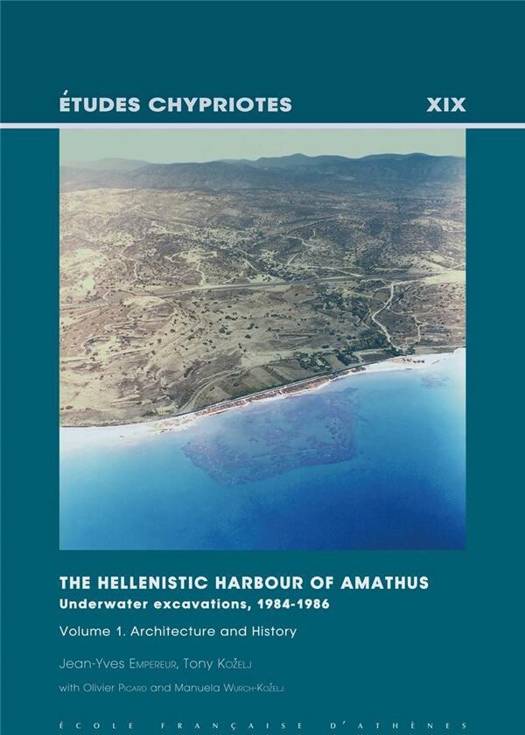
Door een staking bij bpost kan je online bestelling op dit moment iets langer onderweg zijn dan voorzien. Dringend iets nodig? Onze winkels ontvangen jou met open armen!
- Afhalen na 1 uur in een winkel met voorraad
- Gratis thuislevering in België vanaf € 30
- Ruim aanbod met 7 miljoen producten
Door een staking bij bpost kan je online bestelling op dit moment iets langer onderweg zijn dan voorzien. Dringend iets nodig? Onze winkels ontvangen jou met open armen!
- Afhalen na 1 uur in een winkel met voorraad
- Gratis thuislevering in België vanaf € 30
- Ruim aanbod met 7 miljoen producten
Zoeken
The Hellenistic Harbour of Amathus. Underwater Excavations, 1984-1986. Volume 1
Architecture and History
J-Y Empereur, T Kozelj
€ 42,40
+ 84 punten
Omschrijving
We present here the results of three underwater excavation campaigns conducted between 1984 and 1986 on the harbour of Amathus, Cyprus, an exceptional monument of military architecture from the Early Hellenistic era. After a description of the twenty sondages undertaken along the moles, there follows a nomenclature of the blocks employed in the construction, their modules, the typology of bosses for hoisting and placing by a vertical boom crane, which gradually advanced along the mole as it was being built. We describe the nearby quarries in which negatives of the blocks used in the moles were found. The coins have pointed to the attribution of the construction to Demetrius Poliorcetes after his naval victory at Salamis in 306 BC, and the abandonment during the reconquest of the island by Ptolemy I in 294. In the second part, we study the Late Roman wells that were excavated on the north side of the harbour basin, which testify to large changes in sea level.
Specificaties
Betrokkenen
- Auteur(s):
- Uitgeverij:
Inhoud
- Aantal bladzijden:
- 169
- Taal:
- Engels
- Reeks:
- Reeksnummer:
- nr. 19
Eigenschappen
- Productcode (EAN):
- 9782869582934
- Verschijningsdatum:
- 31/12/2017
- Uitvoering:
- Paperback
- Formaat:
- Trade paperback (VS)
- Afmetingen:
- 210 mm x 300 mm
- Gewicht:
- 1224 g

Alleen bij Standaard Boekhandel
+ 84 punten op je klantenkaart van Standaard Boekhandel
Beoordelingen
We publiceren alleen reviews die voldoen aan de voorwaarden voor reviews. Bekijk onze voorwaarden voor reviews.











